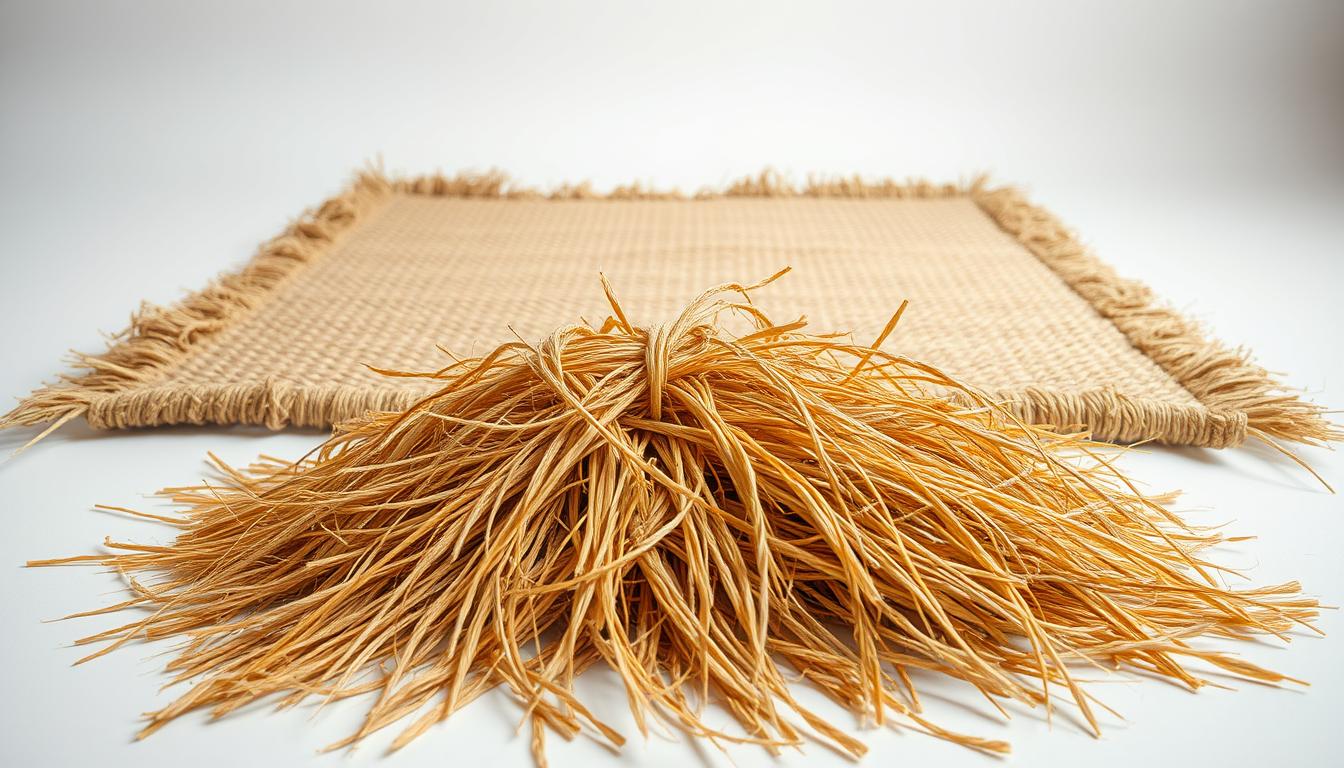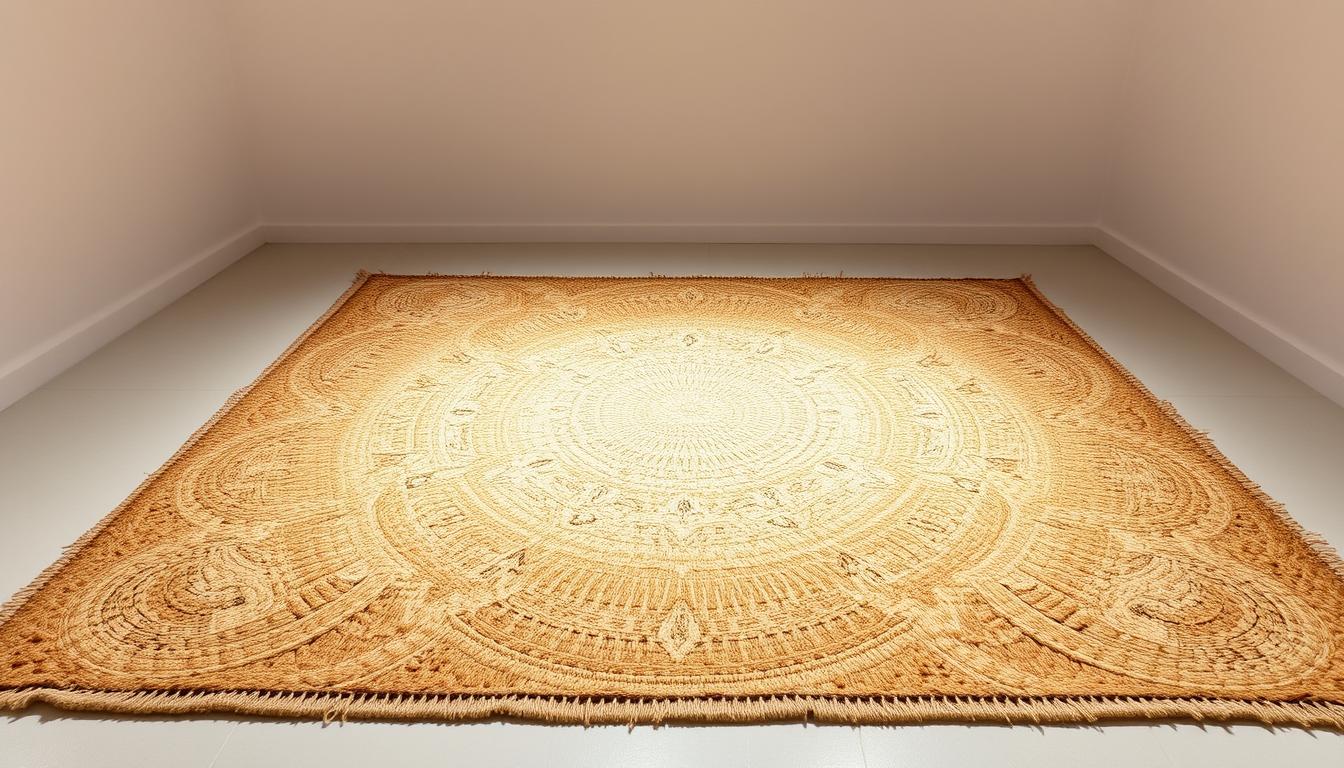
5 Natural Facts About Sisal Rug Materials
Ever wonder how flooring could both elevate your home’s style and actively protect the planet? The answer lies in a rugged plant thriving in arid climates, transformed through centuries-old craftsmanship into timeless home decor. Let’s unravel nature’s best-kept secret for eco-friendly interiors.

Sourced from the Agave Sisalana plant, this natural fiber grows in sun-baked regions like Tanzania and Brazil. Its sword-like leaves yield fibers tougher than most synthetics—yet entirely biodegradable. Farmers harvest mature plants every 2-5 years, creating a renewable cycle that outlasts petroleum-based alternatives.
What makes these sisal rugs stand out isn’t just durability. Their neutral textures adapt effortlessly to modern farmhouse aesthetics or minimalist spaces, while breathable fibers help maintain indoor air quality. Unlike mass-produced options, each piece carries subtle variations that tell the story of its natural origins.
From African plains to your living room, the journey of these materials blends ecological responsibility with artisanal tradition. Discover how this desert succulent becomes flooring that withstands decades of foot traffic while keeping your home toxin-free.
Key Takeaways
- Sisal fibers originate from drought-resistant Agave plants, primarily grown in Tanzania and Brazil
- Natural materials renew faster than hardwood trees, maturing in just 2-5 years
- Breathable construction reduces indoor allergens compared to synthetic alternatives
- Neutral color variations complement both contemporary and traditional decor styles
- One acre of agave plants produces enough fiber for 50 average-sized living rooms
- Artisanal techniques transform tough leaves into textiles scoring 9.2/10 for durability
Discovering the Origins and Natural Qualities of Sisal Rugs
Picture a plant thriving where others struggle—rocky soils, scorching sun, and minimal rainfall. The Agave Sisalana grows precisely in these conditions, offering fibers that become rugs combining resilience with earthy charm.
The Agave Sisalana Plant: Nature's Gem
This spiky-leaved succulent dominates arid landscapes from Tanzania to Brazil. Unlike thirsty crops, it stores water in its thick leaves—a survival trait that makes it ideal for eco-conscious materials. Farmers harvest mature leaves every 2-5 years, leaving the core intact for continuous regrowth.
Each plant lives up to 8 years, producing over 200 sword-shaped leaves. Traditional washing methods strip away pulpy residues, revealing fibers stronger than steel wire relative to their thickness. This natural strength explains why sisal rugs outlast synthetic carpets in high-traffic areas.
From Leaf to Rug: Processing and Weaving Techniques
After sun-drying, artisans twist fibers into yarns ready for weaving. Flat-weave looms create signature textures—think basketweave’s grid-like pattern or herringbone’s zigzag rhythm. These methods preserve the material’s breathability while preventing slippage.
Want to explore intricate weave patterns? Modern techniques transform rigid fibers into designs mimicking linen or jute. Yet unlike those materials, sisal’s natural grip keeps rugs firmly anchored without synthetic backings.
What is a Sisal Rug Made Of: From Agave to Area Rug
Deep within sun-scorched fields lies the secret to your home's eco-chic foundation. Those rugged leaves from the agave sisalana plant undergo a meticulous transformation—preserving nature’s strength while creating floor art that lasts decades.

Extraction and Preparation of Sisal Fibers
Workers hand-cut mature leaves using machetes, revealing sticky sap and raw fibers. These strands get bathed in freshwater to remove plant sugars, then sun-dried into golden threads. Natural bleaching occurs under UV rays, creating those signature earthy tones designers love.
Twisted into yarn through age-old techniques, the fibers gain flexibility without losing tensile strength. This process explains why quality sisal rugs withstand pet claws and furniture weight better than many jute alternatives.
The Role of Natural Latex Backing in Enhancing Durability
That crisp texture underfoot? Thank natural rubber tapped from hevea trees. Artisans brush liquid latex onto woven fibers, creating a grippy base that stops rug creep on hardwood floors. The coating also:
- Reduces fiber shedding
- Blocks dust mites from nesting
- Adds moisture resistance to edges
Finished borders receive double stitching or fabric tape—crucial details preventing fraying in high-traffic zones. From desert plant to living room centerpiece, every step honors the material’s rugged origins while ensuring modern functionality.
The Pros and Cons of Sisal Rugs
Choosing floor coverings involves balancing aesthetics with practicality—sisal rugs demand this evaluation more than most. Their unique blend of rugged charm and ecological benefits comes with specific care requirements worth understanding before committing.

Advantages: Durability and Eco-Friendly Appeal
These floor coverings laugh in the face of heavy foot traffic. Their fibers boast 2x the tensile strength of cotton, resisting fraying even under dining chairs or play areas. Regular vacuuming maintains their crisp appearance for decades, making them a long-term investment rather than disposable decor.
Environmentally conscious homeowners appreciate their pesticide-free cultivation and carbon-sequestering properties. Unlike synthetic alternatives, they won’t off-gas harmful chemicals—a key reason many choose them for nurseries or allergy-prone spaces.
Limitations: Staining Issues and Moisture Sensitivity
Spill coffee on these natural fibers? Act fast. Their porous structure absorbs liquids like a sponge, often leaving permanent marks if untreated. Humid climates pose another challenge—bathrooms or damp basements could cause warping within months.
While their textured surface adds visual interest, it feels rougher than jute alternatives. Consider layering with softer rugs in barefoot zones. For detailed comparisons of natural fiber options, explore this guide to sisal and jute characteristics.
| Feature | Sisal | Jute |
|---|---|---|
| Durability | Extremely high | Moderate |
| Moisture Resistance | Low | Very low |
| Texture | Coarse, structured | Softer, flexible |
| Maintenance | Daily vacuuming | Weekly brushing |
Design Versatility: Patterns, Textures, and Colors
Imagine transforming your space with floor coverings that adapt to your style like a chameleon. Natural fiber pieces shine through their ability to shift between design eras—rustic farmhouse charm one day, sleek modernism the next.
Weaves That Define Spaces
Basketweave patterns bring organic texture to dining rooms, their grid-like structure hiding crumbs between clean lines. Herringbone designs like the Porto collection inject energy with zigzag rhythms perfect for entryways. For minimalist spaces, flat-weave options like Madrid offer understated elegance.
Craving warmth? Bouclé textures mimic cozy wool but withstand spills better. These looped weaves pair beautifully with mid-century furniture or boho accents. Custom edges in navy or terracotta add pops of color without overwhelming neutral palettes.
While sisal’s coarse texture excels in high-traffic zones, softer jute alternatives work better in bedrooms. Layer a plush rug over structured sisal for contrast—your feet will thank you during morning coffee routines.
From sun-bleached neutrals to stain-resistant charcoal, these earth-toned pieces prove sustainability never sacrifices style. They’re not just floor coverings—they’re design tools waiting to redefine your rooms.
FAQ
Are sisal rugs eco-friendly?
Yes! Made from Agave sisalana plants, these rugs are biodegradable and renewable. Their production uses minimal chemicals, making them a sustainable choice for eco-conscious homes.
How durable are sisal rugs compared to jute?
Sisal fibers are stronger and more resilient than jute, ideal for high-traffic areas. While jute offers a softer texture, sisal’s natural resistance to wear makes it last longer in busy spaces like hallways or dining rooms.
Can sisal rugs handle moisture or spills?
Sisal’s natural fibers absorb liquids quickly, which can lead to staining. Avoid using them in damp areas like bathrooms. For spills, blot immediately and use mild cleaners to prevent damage.
What design options do sisal rugs offer?
From rustic weaves to sleek geometric patterns, sisal rugs come in versatile designs. Neutral tones like beige or gray blend seamlessly, while dyed options add subtle color to your room’s atmosphere.
How do I clean and maintain a sisal rug?
Regular vacuuming (without a beater bar) keeps dirt at bay. Spot-clean stains with a dry cloth and mild soap. Avoid steam cleaning, as moisture can weaken fibers. Rotate the rug yearly for even wear.
Why choose natural latex backing for sisal rugs?
Latex backing adds grip, prevents slipping, and boosts durability. It also protects floors from scratches while maintaining the rug’s breathability and eco-friendly qualities.
Do sisal rugs work in modern interiors?
Absolutely! Their textured, minimalist look complements contemporary spaces. Pair with sleek furniture or layer over bold carpets for a dynamic, organic vibe.









